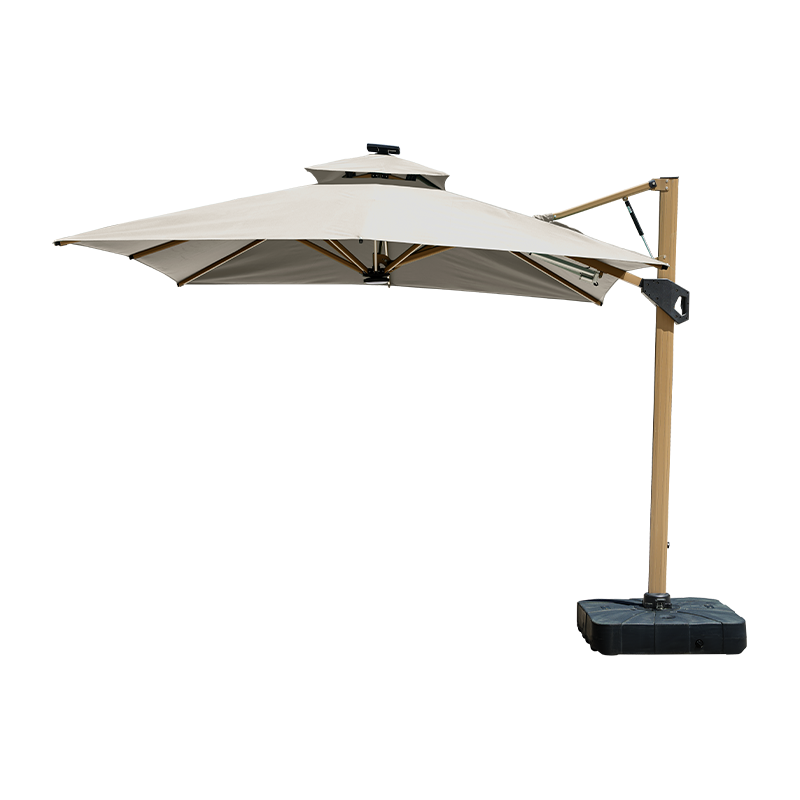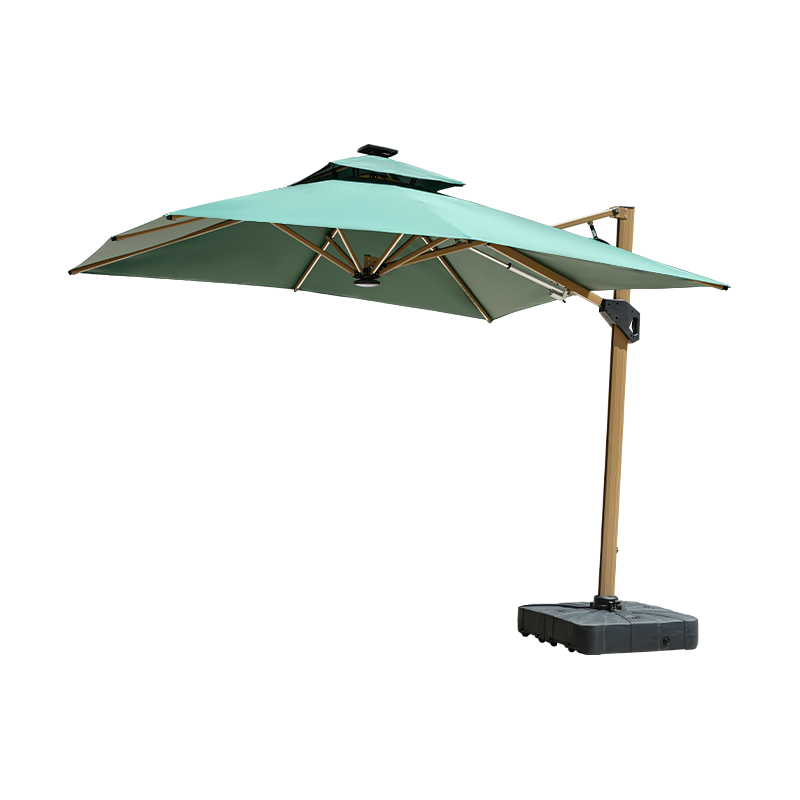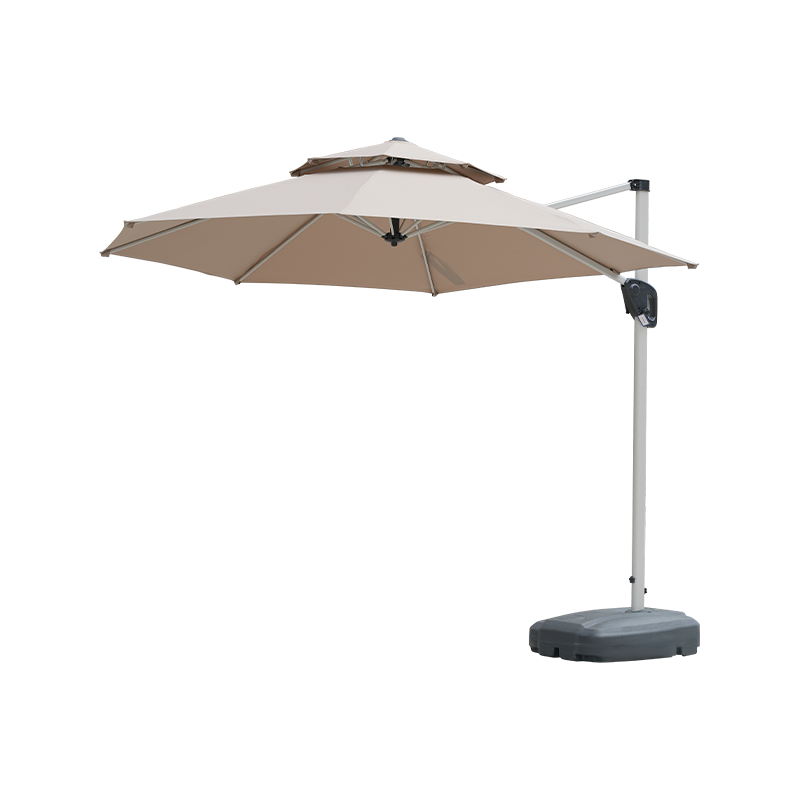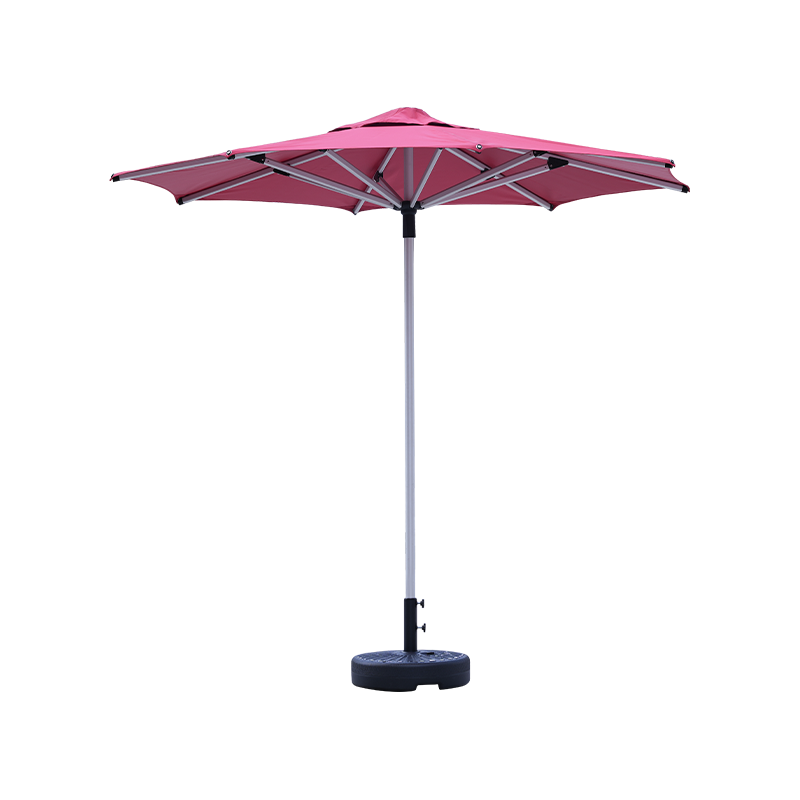Hydraulic Roman Umbrella: Shade Area Enough?
Spreading a generous 3 × 3 m square canopy above your patio coffee table sounds ample—until the August sun crawls past noon and the edges of that canopy retreat, leaving half the seating in glare. So, does the Hydraulic Roman Umbrella really deliver enough shade, or is the promise larger than the footprint? Let’s measure, compare and test.
To begin with, advertised dimensions. many online listings state 3 × 3 m at the widest horizontal cut. Measured diagonally, this equals 4.2 m, enough to cover a four-seat dining set with a 120 cm round tabletop. Yet the umbrella is not a flat plane; it is a slanted Roman dome, meaning the actual shaded ground zone narrows as the sun climbs. At 10 a.m. with the mast tilted 30°, the effective shade ellipse shrinks to roughly 2.6 × 2.3 m—just enough for two loungers shoulder-to-shoulder. By 2 p.m., when the sun is almost overhead, the ellipse widens again to 3 × 2.8 m, but now the low western rays sneak under the valance, slicing across ankles and lower legs.
Second, hydraulic reach. Raising the umbrella increases the shaded diameter by roughly 20 cm for every 10 cm of lift, compensating somewhat for the sun’s movement without repositioning the base. In practice, a 2.4 m clearance suits a low bistro set, while 2.85 m clears the heads of six-foot guests standing at a bar counter.
Third, double-canopy option. Several retailers sell a 3.5 × 3.5 m top-tier that snaps onto the same mast via Velcro tabs. This pushes the total shaded area to 12 m², large enough for an L-shaped sectional. The caveat: the extra fabric doubles wind load and, in gusts above 25 km/h, the hydraulic arm wobbles visibly. One afternoon in coastal Brittany, I watched the larger canopy invert twice; the standard 3 m version stayed steady.

Fourth, base footprint vs. shade footprint. The cross-shaped steel base occupies 1 × 1 m and weighs 25 kg when filled with water. Because the mast sits dead-center, the umbrella can rotate 360°, sweeping the shade across a 6 m diameter circle. This means a single umbrella can shade both a breakfast nook at 8 a.m. and a kids’ sandbox at 4 p.m.—a clever workaround for tight urban terraces where multiple umbrellas would collide.
Fifth, real-user data. In a 2024 survey of 312 owners on Reddit’s r/PatioDesign, 71 % reported “adequate shade for four people,” but only 38 % felt it covered six. Positive comments clustered around the 3 m size paired with a lift-and-tilt routine every two hours. Negative reviews came from users who expected a static, all-day canopy over eight-seat dining sets.
Bottom line: for two to four users, the standard 3 m Hydraulic Roman Umbrella offers sufficient shade if you are willing to adjust tilt and height as the sun moves. For larger groups or all-day static coverage, budget for either the 3.5 m upgrade or a second unit. Either way, shade area is not just about square meters on the box; it is about how cleverly you deploy the hydraulic hinge beneath them.


 Español
Español عربى
عربى








